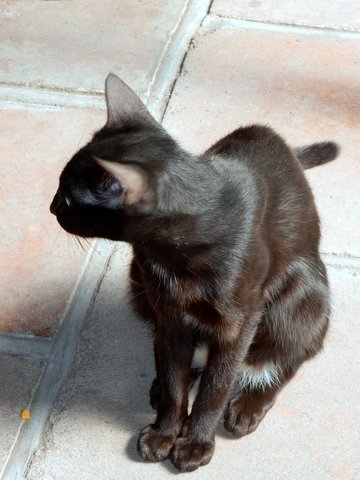Terrorism isn’t what it used to be. Disruptive technology is at work, and terrorism is much more threatening than it was.
The long-running, terrorist wars of the last century – like those of the Palestinians, the Basques in Spain, or the Kurds in Turkey – were relatively contained, both in the fields of operation and the political motivations.
The new face of terrorism is more awful, more random, and has little of the political purpose of terrorism of the past, however terrible its consequences were.
A new generation of robots is coming, which will make remotely controlled terrorism a real threat throughout the world. Add to that threat the profound difference in terrorism motivation.
Yesterday’s terrorism, though heinous, could claim high purpose: It was wholesale terrorism with political goals to be attained by murder and destruction of civilian targets. Today’s terrorism, by contrast, is increasingly retail, motivated by hatred and revenge. Often the motivation is more religious than nationalistic. The 9/11 attacks were the harbinger of this new terrorism.
Now take blind, irrational hatred, as in the Middle East, mix it with killer robots technology, and you have a huge global threat.
In May, the United Nations Convention on Certain Conventional Weapons convened a first-ever meeting of experts in Geneva to discuss Lethal Autonomous Weapons Systems, which could be the start of a wave of anonymous killing across continents and oceans.
These new robotic weapons can do everything that a human with a bomb or improvised explosive can do. The old brake on terrorism — that the terrorist would be caught or, more likely, be killed in the attack — could be over. The age of the armchair terrorist is at hand.
We have all seen the carnage from a simple bomb made from fuel oil and fertilizer. Now add to that the possibility that bombs and other weapons could be made and stored for future detonation using mobile phone technology; or that remotely operated vehicles could drive down a street with machine guns blazing.
Then there are drones. The United States has pioneered the highly sophisticated Predator — remotely-piloted vehicles that can destroy a target across continents and oceans with precision. But non-lethal drones are doing all sorts of work, from examining pipelines to determining the views from potential skyscrapers in New York.
Not only will tomorrow’s terrorists have farther reach, but they will also have the Internet to create chaos. Imagine a Web whisper about a drone armed with biological or chemical agents flying over a big city, its effects magnified by public panic. Likewise, a drone armed with a dirty nuclear weapon – its impact is likely to be quite limited, but the public panic over radiation could cause severe incident.
Israel may have been more panicked over the appearance of a drone from Gaza than the rockets that the Iron Dome missile system took out. A slow-moving drone at rooftop level might one day be a greater threat than a fusillade of high-flying rockets.
The late James Schlesinger, a former Defense secretary and CIA director, liked to discuss the British Empire with me and how it had held together. Because I had grown up in a British colony, he thought I could tell him.
The answer is a combination of economics, psychology and formation before the worldwide proliferation of small arms and explosives. It was fundamental after the Indian Mutiny of 1857-58 that weapons be kept strictly in the hands of the British. African regiments and police, for example, were seldom armed, and then only for special purposes.
Schlesinger emphasized that all arms developments demanded further developments, because your enemy would soon catch up with you. This has happened throughout history: The British invented the tank in World War I, the Germans perfected it in World War II and overran Europe with its Panzer divisions.
Those who hate the West may use its own technologies to attack it at random with remote-controlled weapons, mobile phones, Google maps, and vehicles invented in America. Disruptive technologies are coming to terrorism — and that’s a horror. — For the Hearst-New York Times Syndicate
